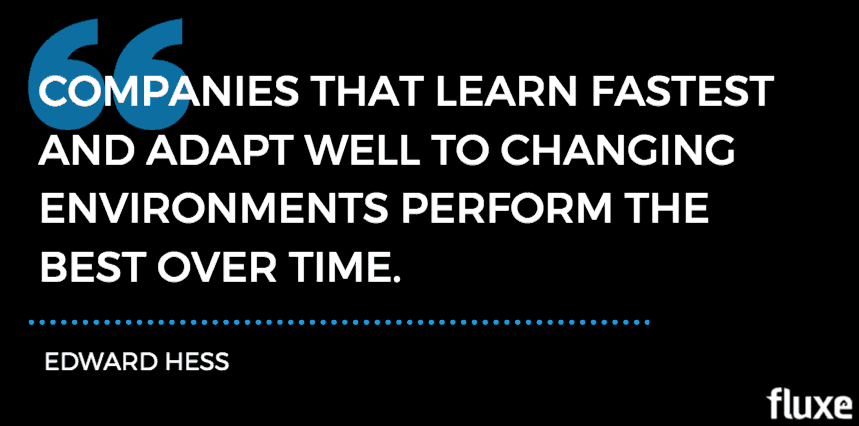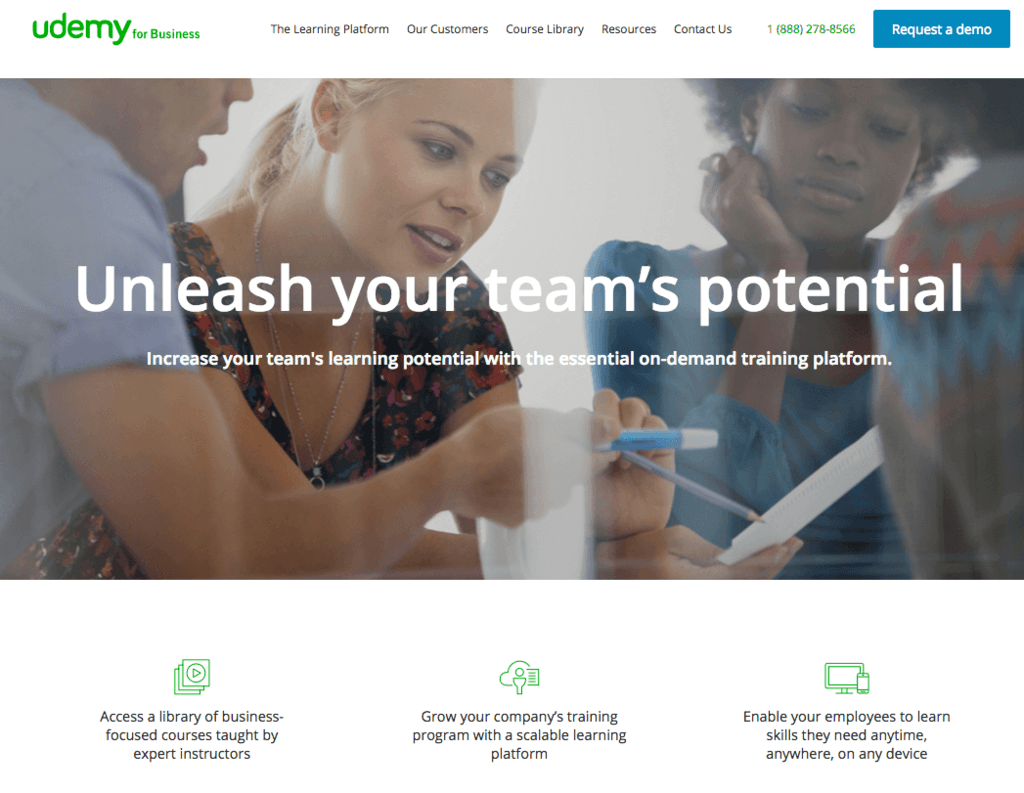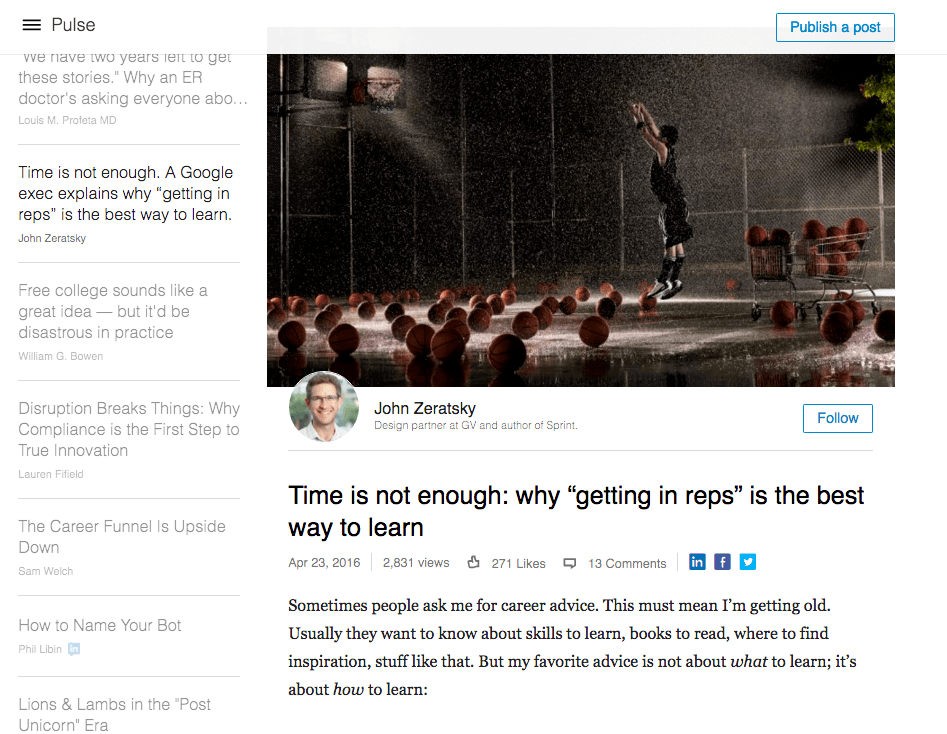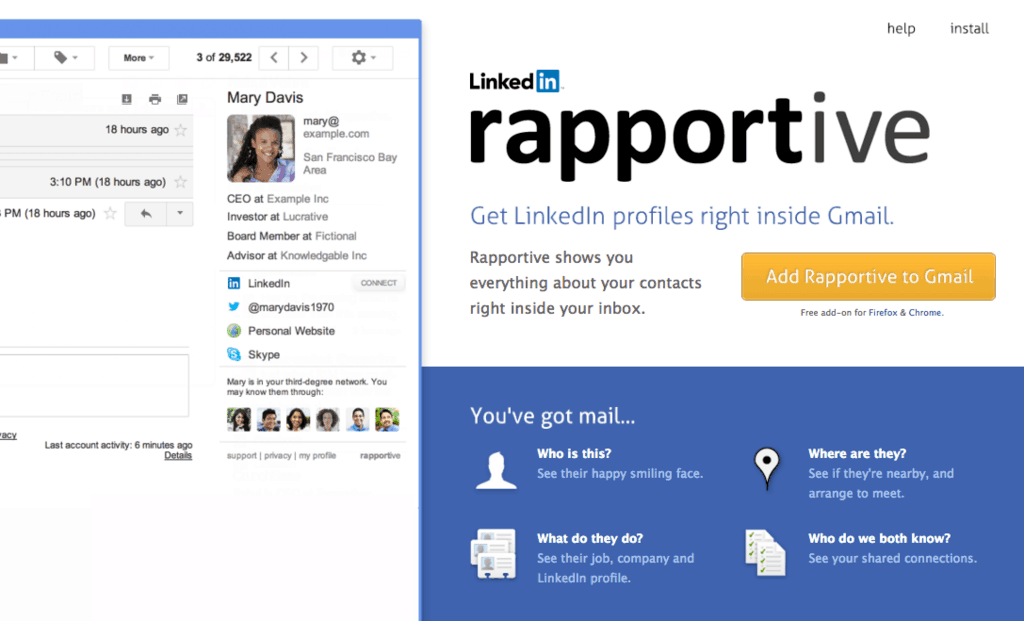Thought leaders never start out as thought leaders.
They earn that title from constant growth (the “thought”) and build a following of people who listen and take action on what they say (the “leader”).
So, at what point did they graduate from employee to thought leader?
After working with dozens of thought leaders across different industries, we’ve noticed a trend in the characteristics their companies shared. These are the top three ways you can cultivate thought leaders in any size company.
Develop a Learning Culture
Because continuous learning can’t always be tied to profit, it’s difficult for salespeople and executives to carve out time for it. However, research suggests learning shouldn’t be viewed as a luxury, but a skill to hone for long-term growth:
“Companies that learn fastest and adapt well to changing environments perform the best over time,” says Edward Hess, a professor of business administration at the University of Virginia’s Darden School of Business and author of Learn or Die: Using Science to Build a Leading-Edge Learning Organization

Ongoing training and learning are proven to:
-
- Increase productivity and efficiency
-
- Help identify weaknesses and skill gaps in employees
-
- Increase employee satisfaction while decreasing turnover
-
- Create a strong sense of ownership and accountability
-
- Increase the ability for employees to adapt to change
- And much more!
So how do you create a culture of continuous learning? It should start at the top with managers and executives teaching this to their employees and setting an example.
Here are a few ways to get started:
Formalize a learning program: Make learning mandatory to create a habit amongst your employees. This may seem unnecessary, but without a formal program in place, you’ll risk your employees not taking it seriously.
Set specific goals for your learning programs: What specific outcomes and advantages do you want your employees to gain? Before you invest in training resources, work with your team to develop a clear outcome so you can measure and evaluate performances based on their learning.
Make learning resources available: Once you have your goals, work with your employees to find the best resources to achieve them. These can include books, online training portals like Udemy or Lynda, conferences, and industry-specific publications.

Consider creating an intranet or resource hub for your employees to share articles and insights with their peers. At Fluxe, we use Slack and have specific channels for sharing these types of findings.
Start a mastermind group in your company: If employees are spread across multiple locations, it’s easy for them to fall into the rut of talking to the same coworkers every day.
Set aside an hour each month to bring employees together who may not typically interact. This gives them the opportunity to share strategies that are working, ask for help with challenges, and offer different perspectives.
Developing a learning culture isn’t a luxury anymore, it’s a must for companies that want to position themselves as an authority for continuous growth.
Get Your Non-Marketing Employees Blogging
With the right content strategy, blogging on your website–or LinkedIn publishing–can be an extremely powerful tool to position employees.

Depending on your company policies and how much freedom you want to give employees, there are a few ways to approach this. Most companies fear that employees will slip up and say something they shouldn’t, creating a huge PR mess. It’s a valid concern – but it shouldn’t stop you from using the collective knowledge of your team. Here are two approaches:
- Interview key employees to extract content: Chances are your key employees aren’t avid writers and don’t have the time to publish consistent articles, BUT your marketing department may. Have your marketing department interview key employees about important customer topics and develop blog posts from those interviews.
This builds employee thought leadership and keeps them involved in the content creation process. Because the key employees stay involved, they’re much more likely to use the marketing content in their sales process.
How do we know? This interview process is exactly how we do it at Fluxe. Our clients use the content we’ve created from their interview in every stage of their business, from shortening the sales process to saving time in customer service.
One of the unexpected benefits of this process is helping your employees discover how much they really know. Most employees are so close to their jobs they don’t realize how much they’ve learned. When we do a content extraction with a key employee or executive, we come away with months worth of content topics they didn’t realize they had.
- Have employees write their own content: If your employees prefer to write their own content, you can feature individual employee blogs or have them create content on their LinkedIn profiles through LinkedIn publishing. You can also have a company blog with key employees as individual contributors.
Start with a clear set of goals for the content and a strategy to carry out those goals. Here are a few questions to ask when getting started:
- What are your goals for the blog?
- Who is your target audience?
- What topics will you write about to carry out your goals?
- What types of content do you need for each stage of the sales process?
- What are your brand voice and the tone you’ll use when writing?
- What does your content approval process look like?
- When and how often will you publish?
- How will you promote your content and get it in front of your prospects once it’s published?
Build Your Personal Brand Online
“Your brand is your personal lawyer… It defends and speaks for you even in your absence. Keep calm and maintain a good brand!” – Israelmore Ayivor

This is important for your employees, but even more crucial for you, the CEO or business owner.
It doesn’t matter how influential you are in person if you don’t have a strong personal brand online. So my question is: does your offline brand match your online brand?
Let’s say we divided your network into three groups: cold, warm, and hot. People you want to meet are cold, people you’ve come into contact with are warm, and the people you’re frequently in touch with are hot.

Most people are great at influencing their “hot” networks in person; it’s easy to influence the people you’re always around. But if you’re only focusing on people you’ve met, you’re leaving out the biggest parts of your network: the cold and warm contacts.
If your online and offline presence aren’t consistent, it creates a mountain of unnecessary work. You’ll be forced to work harder at building authority and start at the beginning with every new “cold” person you meet.
In contrast, a strong online personal brand can:
-
- Be a catalyst for generating new opportunities and relationships.
-
- Lead to speaking gigs in your industry, new clients, mentors, etc.
-
- Build credibility and trust in the sales process.
- Increase referrals and much more!
Keep your online brand current with information your cold network can learn about you. That way, when people Google you, you can control what they’re seeing before they meet you.
Let’s look at a few ways to start:
Update Your Existing Online Profiles: Are they up-to-date with the latest information, from your photo to company info to your bio?
Update Your LinkedIn Profile: If you haven’t updated your LinkedIn profile in the last six months, jump in there and make sure everything is current. Your LinkedIn profile is often the first result that comes up in Google and the first thing your prospects see. Which brings us to…
Google Yourself: What comes up on the first two pages? Your social media accounts? LinkedIn profile? Articles you’ve written or been featured in? The first page is your first impression online. Are you controlling it or leaving it up to chance?
Create a Personalized Follow-Up Process: After you meet someone new, you probably send them a follow-up email. That’s a great first step, but if you want to build your warm network, take it a few steps further. First, send them a LinkedIn invite. Then, Google their name—if you haven’t already—to find their other prominent networks where you can connect. You can also use a tool like Rapportive to easily connect with a new LinkedIn prospect inside of Gmail and see what contacts you may have in common.

Each of these strategies works together. You must create a culture of learning to keep employees engaged and growing. This sets the foundation for sharing their knowledge, which they can do through a company blog and their personal brand.
What steps are you taking to position your employees as thought leaders?



